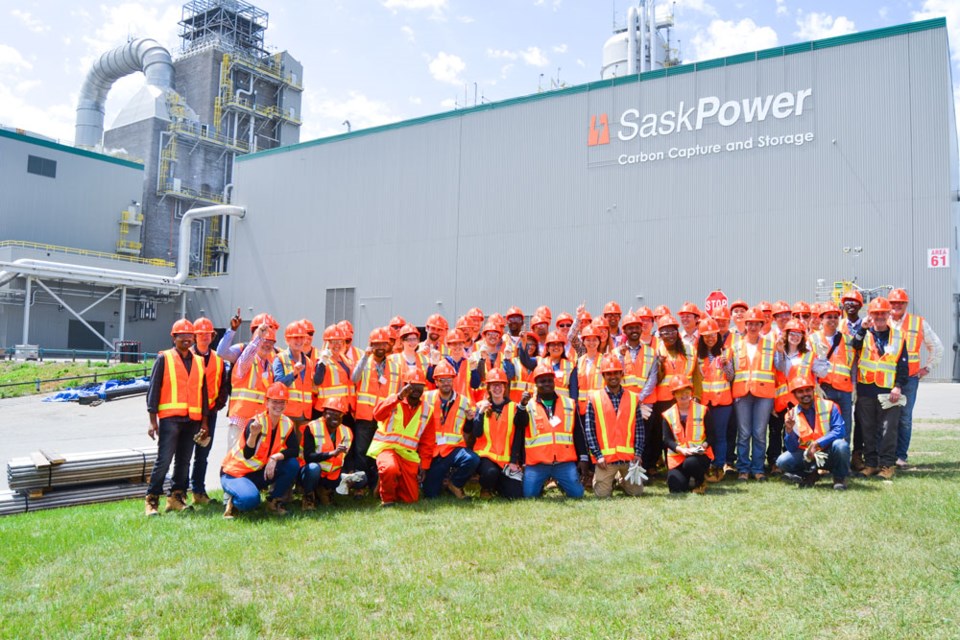The amount of international interest in SaskPower’s Boundary Dam power station and its proprietary carbon capture and storage (CCS) technology continues to grow. This time around, instead of political leaders, a group of students who comprise the next generation of scientists and innovators in the field of carbon capture and related technologies were guests.
SaskPower hosted a tour of Unit 3 and the carbon capture island at Boundary Day, as well as the carbon capture test facility at the Shand Power Station and the Aquistore carbon sequestration facility on July 20. The tour demonstrated to a number of students at various levels of education, and with numerous education backgrounds, what kind of progress has been made in the field of CCS technology, here in Estevan.
Students participating in the tour came from 17 countries, such as Switzerland, Ghana, the U.K., Abu Dhabi, Japan, China, Indonesia, India and Australia, among others. The tour was done in conjunction with the International Energy Agency Greenhouse Gas R&D Programme (IEAGHG), which runs a summer school program. The program is designed to specifically educate students in the issues surrounding CCS, and is meant to encourage participation in the industry.
SaskPower officials led groups of inquisitive students through the facilities. The tour entailed thorough explanations of how the technology in each facility works, with ample time given to students to ask questions, of which there were plenty.
A majority of the interest in the tour was focused on the CCS technology at Unit 3, where a multitude of technical conversations between students and SaskPower officials were initiated, as each component of the technology in place was shown to them.
“Boundary Dam is actually the reason I came for this summer school, because I actually wanted to see the facility,” said Tolu Kolawole, a student at Newcastle University, in the U.K. “It’s pretty exciting for me, because I work directly on carbon capture, which is basically part of my PhD. We’re looking at how we can capture carbon more efficiently, and bring down the cost of capturing CO2.”
Kolawole noted that the tour was particularly exciting for him, because a lot of what he saw, while touring SaskPower’s facilities represented the first actual physical demonstration of the CCS technology in action.
He added, “I asked a couple of questions that I probably knew about theoretically, but I was actually seeing it practically for the first time, in terms of knowing what the real world problems are, challenges that were faced, and how they overcame it, so it was quite good.”
Hannah Rose Schonwald, a PhD student at Arizona State University in the Center for Negative Carbon Emissions, said that what she saw during the tour was essential knowledge for her, as someone who aims to be a professional in the carbon management industry, as it develops now and in the coming decades.
“It validates everything we’re working for, and any question of the financials and the practicality of the technology,” said Schonwald. “It answers a lot of those questions and shows possibilities we can move forward with.”




